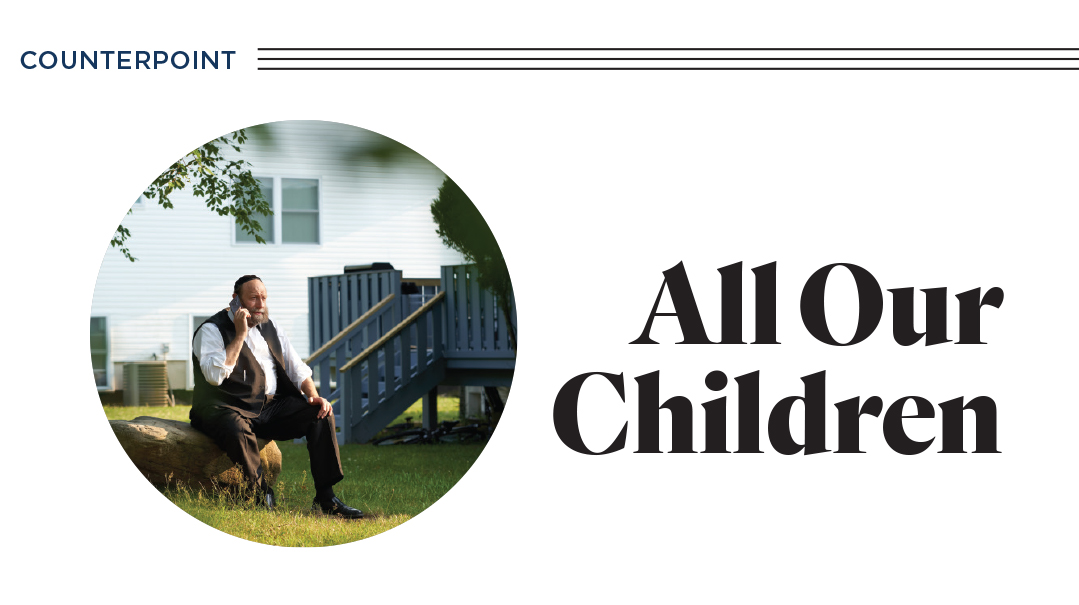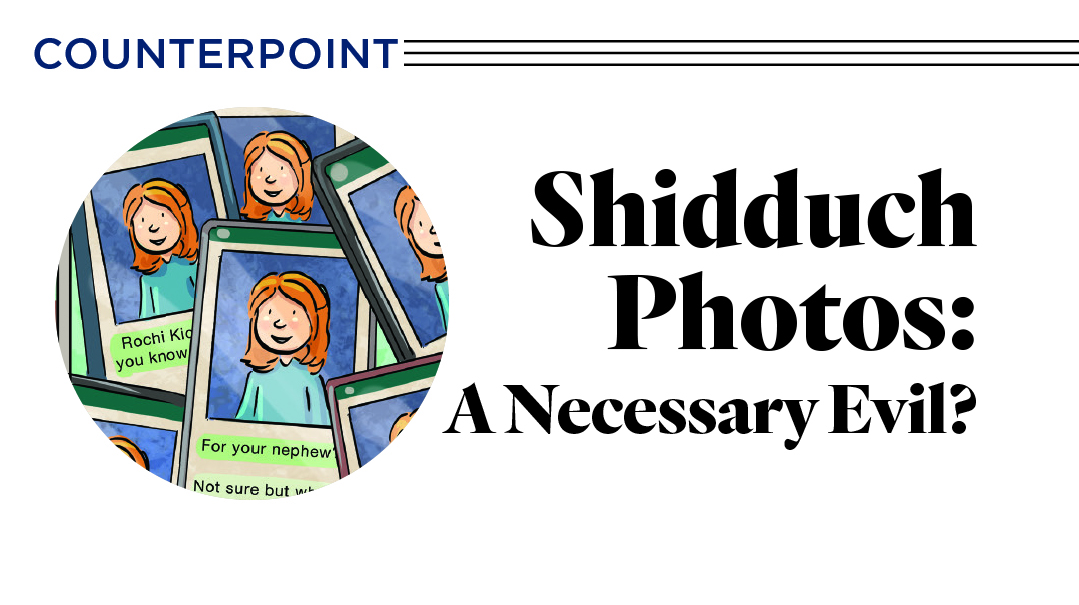Why Wait in Passaic?

Rabbi Grylak’s response to a reader who explained why he’s reluctant to make aliyah drew a large and lively response. Following is a sampling of the letters we received.
The conversation continues
Outside the Box › Yehuda L. Oppenheimer, Lavon, Israel
I followed with great interest the back and forth regarding the virtues of “Waiting in Passaic,” both as a recent oleh and as a child of parents who came on aliyah almost 50 years ago, only to have me go back and spend the majority of those years in America.
Part of the reason I spent those years in chutz l’Aretz was due to factors pointed out by “Waiting.” Having come to Israel at age 14, my parents and I wanted me to have a high school education (I went back to America for two years for that), I was frustrated integrating into Israeli society on various levels, and so on. My siblings who stayed in Israel fully integrated into the chareidi world, except for one sister who is also still “waiting in Passaic.”
In his response, Rabbi Grylak pointed to some significant factors, ending with an important call for American Jews to come and help change Israeli attitudes for the better. There are, however, some crucial additional points that ought to be stressed:
Things are not quite the same as they used to be — not in America and not in Israel. In America, there is a greater movement in many yeshivah circles to encourage long-term kollel learning and to denigrate working men and secular education. Baaalei teshuvah are often discriminated against in schools and in shidduchim. Those who work, engage in sports and secular activities, and value anything in addition to purely Torah values are considered outsiders in many circles.
At the same time in Israel, the acceptability of men working, even of going to the army at a certain point, the availability of secular education in chareidi high schools, the appreciation of out-of-the-box people is growing (in part because of the influence of American olim, as Rabbi Grylak said). In short, the contrast between America and Israel for non-kollel members of the chareidi community is far less than it was, and that trend is continuing.
There are more choices for places to live in Israel than American chareidim usually consider. I joined the Ayelet HaShachar organization — which, among other important things, helps religious Jews live in secular communities — and live in Lavon, a small yishuv in the Galilee. For me it is a new lease on life, being able to have a positive impact on my secular neighbors, who are specifically appreciative that a friendly, nonjudgmental, American religious person came to live among them. Just by being here, I have helped establish a weekly minyan; I learn with several people, and I hope for more in the future.
Moreover, Lavon is ten minutes from Karmiel, where there are shuls, schools, yeshivos, kosher shops and restaurants, and all of the infrastructure needed to live a full frum life.
In addition, for me, it is frankly great to be away from some of the negative aspects of big-city chareidi life. The chareidi community here is open, friendly, welcoming, and does not suffer from all of those excesses.
This opportunity is not limited to Lavon; Ayelet HaShachar would like to place other people like me — especially retired rabbis and knowledgable lay people — in many areas in the length and breadth of Eretz Yisrael, outside the chareidi centers.
Finally, it should be clearer and clearer that the future of Am Yisrael is in the amazing gift that HaKadosh Baruch Hu granted us for the past 70 years, in our own holy country. There are amazing opportunities in the booming economy, and people are living quite nicely here now, as opposed to the past. Furthermore, the winds of anti-Semitism are rising in America, the pervasive secularism is influencing the frum community, and even given the strength, beauty, and vitality of the American frum community, it should be clear that our future, even before Mashiach, is not in America.
The wonderful, all-important mitzvah of yishuv Eretz Yisrael beckons us, and unlike previous generations, there are far fewer excuses for ignoring it. While individuals may have their particular reasons for staying away, I believe it is incumbent on everyone to ask themselves if they truly have a sufficient reason for ignoring this mitzvah and tremendous opportunity. Broaden your perspective, understand that we live in an incredible time in which each of us has an opportunity to help build Eretz Yisrael, specifically beyond the narrowness of some in the Israeli chareidi world — and come home. As Rabbi Grylak said, you are much needed here... you will be welcomed with open arms as long as you are willing to think outside the box.
Not an Option › Also Waiting in Passaic
I read Rabbi Grylak’s column and the “Waiting in Passaic” response to it with interest. I, too, would have loved to make aliyah and live a life of kedushas Eretz Yisrael, but we chose not to for the very reasons mentioned by Waiting in Passaic.
Although we live a life of kedushah and ruchniyus, and one that is steeped in very serious Torah learning, we had to give up the dream of the added kedushah of Eretz Yisrael because we weren’t willing to place our children in a box in which we couldn’t be mechanech them al pi darko, in a place where they would be looked down upon because we value both ideas that Rabbi Yonoson Rosenblum writes in “Life after Kollel” on the next page of the same magazine. We made the decision to live both by the Nefesh HaChaim in which Rav Chaim explicates the profound impact of every word of Torah learning on the entire cosmos and by the final paragraphs of Mesillas Yesharim, in which the Ramchal writes that the highest level of Divine service is as accessible to “the one who plies a humble trade” as to “the one from whose mouth learning never departs.”
From a chinuch perspective, we couldn’t choose to live in a society in which good learning boys are simply not given any form of outlets spoken about so eloquently by Rav Henoch Plotnik in these pages weeks ago. How can it be that a metzuyan, erlich boy who spends eight hours a day learning is denied the chance to play basketball with a friend for ten minutes to get exercise and unwind, and if he does, he’s looked down upon?
We don’t need to be told the whys and the hows of the chareidi perspective that developed these ideas historically — we’re quite aware of, and respect and agree with the premises. But for all of the reasons above, Eretz Yisrael was not an option for us. Instead, as we wait for kibbutz galuyos, we have tried our best, with Hashem’s help, to build a life of kedushah in chutz l’Aretz.
We look forward to the day when our (Anglo and native) chareidi brothers and sisters in Eretz Yisrael create a space that truly embraces every child and family al pi darko and recognizes that we can live — and thrive — with both the Nefesh HaChaim and the Ramchal, neither one abrogating the other and both serving to reinforce a community that truly serves Hashem.
Change is Happening › Blimi Grossman, Jerusalem, Israel
Eighteen years ago, I could have written the same letter that “Waiting in Passaic” wrote, detailing the black-and-white perspective of Israeli chareidi society and the limitations of its chinuch system. Now, after two decades living in Israel, my perspective has changed — because Israeli chareidi society has changed too.
Israel is a country of immigrants, and it’s a country that has traditionally expected (and at times even forced) immigrants to toe the Sabra line. In the past, American immigrants did not receive any special pass. Local establishments like schools, yeshivos, shuls, government offices, and even businesses were not open to the maalos of the American mentality and lifestyle, and they’d only accept Americans into the system if these immigrants fully adapted to Israeli culture.
That unspoken rule is no longer absolute. Within Israeli chareidi society, you can find a subculture of American chareidim who manage to hold on to some uniquely American institutions such as the Torahdig balabos, the school system that benefits from secular wisdom without tainting its Torah focus, and the shul that is also a social and communal network.
It’s been interesting to watch as many Israeli establishments come to admire and sometimes even adapt the maalos of the once-threatening or foreign Americans. Girls’ schools now offer a host of creative extracurricular programs, including performing arts at a level even higher than in America. Yeshivos and chadarim have brought occupational and speech therapists on staff. Parnassah opportunities for young men are slowly beginning to develop. Local municipalities offer traveling libraries and aerobics chugim. Health clinics are actively doing outreach to English-speakers, some even offering first-aid courses in English.
It’s not an overnight change, and unfortunately, some leading educational institutions are still prejudiced against Americas. But the rigid, across-the-board intolerance of the past is definitely fading. And the Americans who do find their places here are also finding much to admire in the rock-solid values, unbending priorities, and simpler lifestyles of their Israeli neighbors.
(Originally featured in Mishpacha Issue 745)
Oops! We could not locate your form.











